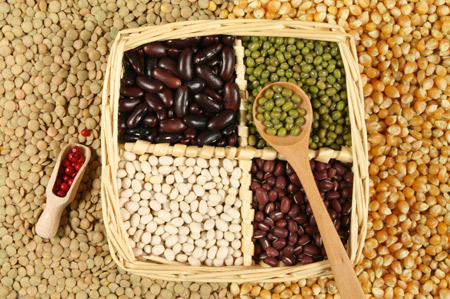 (Wall Street Journal) – Investors in soft commodities are used to being slaves to the weather’s twists and turns. With prices now in a depression and the El Niño weather pattern looming, the forecast looks more unsettled than normal.
(Wall Street Journal) – Investors in soft commodities are used to being slaves to the weather’s twists and turns. With prices now in a depression and the El Niño weather pattern looming, the forecast looks more unsettled than normal.
The possibility that the Federal Reserve will raise interest rates later this year, coupled with a strong U.S. dollar as a result, have weighed on prices of commodities already under pressure thanks to slowing growth in the key Chinese market. Soft commodities haven’t been spared, with sugar trading around six-year lows, dairy at 13-year lows and palm oil down around 13% so far this year.
Yet the expected dry weather in Asia and wetness in the U.S. and South America that El Niño may bring could stem the losses in agricultural products, and even push prices higher if the impact on crops is as bad as some expect.
El Niño occurs when winds in the equatorial Pacific slow down or reverse direction. That warms water over a vast area, which in turn can upend weather patterns around the world. It typically reduces rainfall in Australia and across parts of southeast and southern Asia in the winter and spring.
Australia’s Bureau of Meteorology Tuesday said that the weather phenomenon has continued to strengthen and temperatures in the central tropical Pacific Ocean may exceed the peak values reached during 2002 and 2009 El Niño events.
“High volatility weather patterns are going to wreak havoc on the commodities markets,” said Michael Underhill, chief investment officer at Wisconsin-based Capital Innovations, which has nearly $1 billion of assets under management.
The impact of El Niño so far this year has been patchy across Asia. Rainfall in India’s monsoon season is currently tracking just below the long-term average while most of the areas that were in need of rain, including Vietnam and Philippines, have received some over the past 10 days.
Meanwhile, the Thai Rice Exporters Association last month downgraded expected rice-export forecasts. It expects to export 9.5 million tons of rice in 2015, down from 10.97 million tons in 2014 because of a lack of rain. Rains in July have somewhat alleviated the dry conditions.
The difficulty for investors is judging whether El Niño will have enough of an impact on crops to offset the broader macroeconomic trends that have been pushing commodity prices down.
El Niño’s impact may not play out the same way in all regions. For example, while the dry weather it brings in South East Asia may damage crops, the extra rain it brings in North and South America could help farmers, leading to rising supply of commodities. Arabica coffee could benefit from a reduction in frosts as El Niño boosts temperatures, while increased rain could boost corn crops in Brazil. However, too much rain in the Americas could hamper milling of sugar and harvesting of grains and have a negative impact on supply.
Concerns about the weather pattern caused an initial “pop” in a number of agricultural commodity prices over the last couple of months, said Matthew Bradbard, director at RCM Alternative, a Chicago-based firm that specialized in managed future products. But if markets start to anticipate it won’t be as bad as first expected this could reverse, he added, noting the rally in wheat in early July has been pared back as early concerns about the impact of El Niño on the grain have waned, though he expects sugar prices to start strengthening.
tops or bottoms but I’m lightly starting to buy sugar because it is so cheap.”
Some Asia-based companies could benefit from upended weather patterns because of their exposure to palm oil and sugar prices, said Mr. Underhill. For every 10% that palm oil prices rise, for example, Golden Agri-Resources Ltd the world’s second largest palm oil plantation company could see net profit increase by 16%, he said. Trading company Wilmar International Ltd. could meanwhile benefit from soft commodity price volatility brought on by weather changes.
The market hasn’t taken into sufficient account the support that El Niño could provide to agricultural commodity prices and what this could mean for upstream producers, said James Govan, investment manager at Baring Global Agricultural Fund in London.
“El Niño tends to be most positive for Argentina and southern Brazil, as these regions tend to see an improvement in yields. We have increased our allocation to Latin American farming stocks—these companies are also currently gaining from depreciating local currencies against the U.S. Dollar,” he said.




